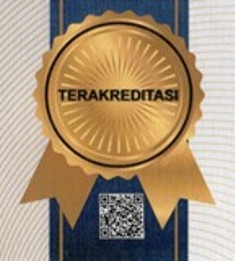Mapping of Mangrove Distribution in Percut Sei Tuan Sub-District Deli Serdang Regency
DOI:
https://doi.org/10.24036/sjdgge.v6i1.402Keywords:
Mapping, Zonation, Distribution, MangroveAbstract
Mangroves are coastal ecosystems that are rich in diversity of flora and fauna. Mangroves have an important role in coastal areas in terms of ecology, biology, and economy. However, mangrove management has not balanced these three aspects and tends to be exploited for economic purposes. The purpose of this study was to map the distribution of mangroves, identify changes and zoning of mangroves in the Percut Sei Tuan subdistrict. The method used in this research is a survey method. Collecting data from Landsat Multitemporal images in 2017 and 2021 as well as field data through observation. Data analysis was performed using Envi and Arc GIS software. The results showed that the distribution of mangroves was found along the coast of Percut Sei Tuan District. The decline in mangrove ecosystems occurred in the period 2017 and 2021. Mangrove zoning in this area is in accordance with other mangrove zoning in Indonesia, which consists of open mangroves, transitional mangroves, brackish mangroves, and mangroves close to the mainland. The diversity of mangrove species in the form of true mangroves and associated mangroves was also found on the coast of Percut Sei Tuan District.
Downloads
References
[2] Salem, M. E., & Mercer, D. E. The economic value of mangroves: A meta-analysis. Sustainability, 4(3), 2012. pp.359-383.
[3] Lavieren, H., Spalding, M., Alongi, D. M., Kainuma, M., Clusener-Godt, M., & Adeel, Z. Securing the future of mangroves. A policy brief. UNU-INWEH, UNESCO-MAB with ISME, ITTO, FAO, UNEP-WCMC and TNC. 2012. pp 53.
[4] Viswanathan, P. K., Pathak, K. D., & Mehta, I. Socio-economic and ecological benefits of mangrove plantation: A study of community based mangrove restoration activities in Gujarat. Gujarat Institute of Development Research. 2011. pp164.
[5] Ministry of Marine and Fisheries Affairs. Marine and Fisheries Affairs in Figures 2016. MMAF. ID. Jakarta: Kementerian Kelautan dan Perikanan. 2016.
[6] Giri, C., Pengra, B., Zhu, Z., Singh, A., & Tieszen, L. LMonitoring mangrove forest dynamics of the Sundarbans in Bangladesh and India using multi-temporal satellite data from 1973 to 2000. Estuarine, coastal and shelf science, 73 (1-2), 2007. pp 91-100.
[7] Van, T.T., Wilson, N.,Thanh-Tung, H., Quithoudt, K., Quang-Minh, V., Xuan-Tuan, L., DahdouhGuebas, F., & Koedam, N. Changes in mangrove vegetation area and character in a war and land use change affected region of Vietnam (Mui Ca Mau) over six decades. Acta Oecologica, 63, 2015. pp 71- 81.
[8] Tambunan, Iqbal. Pengaruh Lingkungan Tempat Tinggal Terhadap Pengetahuan Siswa Tentang Ekosistem Mangrove Di Kabupaten Deli Serdang. Jurnal Biolokus. Vol 1 (1). 2018.
[9] Burhanuddin. Kajian Kondisi, Potensi dan Pengembangan Hutan Manggrove di Serdang Bedagai. Jurnal Wahana Inovasi. Vol 5 No. 2, 2016.
[10] Alongi, D. M. Present state and future of the world's mangrove forests. Environmental conservation, 29(3), 2002. pp 331-349.
[11] Santos, L. C. M., Gasalla, M. A., Dahdouh-Guebas, F., & Bitencourt, M. D. Socio-ecological assessment for environmental planning in coastal fishery areas: A case study in Brazilian mangroves. Ocean and Coastal Management, 138, 2017. pp 60–69.
[12] Green, E. P., Clark, C. D., Mumby, P. J., Edwards, A. J., & Ellis, A. Remote sensing techniques for mangrove mapping. International journal of remote sensing, 19(5), 1998. pp 935-956.
[13] Hartono, H., & Muljosukojo, B. Monitoring mangrove disappearance by remote sensing: A case study in Surabaya, East Java-Indonesia. Indonesian Journal of Geography, 21(61), 2019. pp 15-32.
[14] Heumann, B. W. Satellite remote sensing of mangrove forests: Recent advances and future opportunities. Progress in Physical Geography, 35(1), 2011. pp 87-108
[15] Wicaksono, P., Danoedoro, P., Hartono, & Nehren, U. Mangrove biomass carbon stock mapping of the Karimunjawa Islands using multispectral remote sensing. International journal of remote sensing, 37(1), 2016. pp 26-52.
[16] Nurul, A.B.K. Application of Remote Sensing and Geographic Information System
Techniques to Monitoring of Protected Mangrove Forest Change in Sabah, Malaysia. 2016.
[17] Thomas, N., Bunting, P., Lucas, R., Hardy, A., Rosenqvist, A., & Fatoyinbo, T. Mapping mangrove extent and change: A globally applicable approach. Remote Sensing, 10, 2018. pp 1466.
[18] Mirnategh, S. B., Shabanipour, N., & Sattari, M. Seawater, Sediment and Fish Tissue Heavy Metal Assessment in Southern Coast of Caspian Sea. International Journal Of Pharmaceutical Research And Allied Sciences, 7(3), 2018. pp 116-125.
[19] Woodroffe, C. D., Rogers, K., McKee, K. L., Lovelock, C. E., Mendelssohn, I. A., & Saintilan, N. Mangrove sedimentation and response to relative sea-level rise. Annual Review of Marine Science, 8, 2016. pp 243-266.
[20] Zhang, Z., Treitz, P., Chen, D., & Quan, C. Mapping mangrove forests using multi-tidal remotely- sensed data and a decision- tree based procedure. International Journal of Applied Earth Observation and Geoinformations, 62, 2017, pp 201- 2017.
[21] Hai-Hoa, N. Using Landsat imagery and vegetation indices differencing to detect mangrove change: A case in Thai Thuy district, Thai Binh province. Journal of Forest Science and Technology, 5, 2016. pp 59-66.
[22] Anaya, J. A., Chuvieco, E., & Palacios-Orueta, A. Aboveground biomass assessment in Colombia: A remote sensing approach. Forest Ecology and Management, 257(4), 2009. pp 1237-1246.
[23] Ekhzarizal, M., Mohd-Hasmadi, I., Hamdan, O., Mohamad-Roslan, M., & Noor-Shaila, S.
Estimation of aboveground biomass in mangrove forests using vegetation indices from SPOT-5 Image. Journal of Tropical Forest Science, 30(2), 2018. pp 224-233.
[24] Carrasquilla-Henao, M., Ban, N., Rueda, M., & Juanes, F. The mangrove-fishery relationship: A local ecological knowledge perspective. Marine Policy, 108, 2019.
[25] Nduru, E. N., & Delita, F. Analisis pemanfaatan hutan mangrove oleh masyarakat Kampung Nipah Kecamatan Perbaungan Kabupaten Deli Serdang. El-Jughrafiyah, vol 1, 2021.
[26] Dat, P. T., & Yoshino, K. Monitoring mangrove forest using multi-temporal satellite data in the Northern Coast of Vietnam. Paper presented at the the 32nd Asian Conf. on Remote Sensing. 2011.
[27] Kongwongjan, J., Suwanprasit, C., & Thongchumnum, P. Comparison of vegetation indices for mangrove mapping using THEOS data. Proceedings of the Asia-Pacific Advanced Network, 33, 2012. pp 56-64
[28] Phuc, T. X., Nghi, T. H., & Zagt, R. Forest land allocation in Viet Nam: implementation processes and results. Tropenbos International Vietnam: 2013. pp 1-10.
[29] Kongkeaw, C., Kittitornkool, J., Vadergeest, P., & Kittiwatanawong, K. Explaining success in community based mangrove management: Four coastal communities along the Andaman Sea, Thailand. Ocean and Coastal Management, 2019. pp 178.












